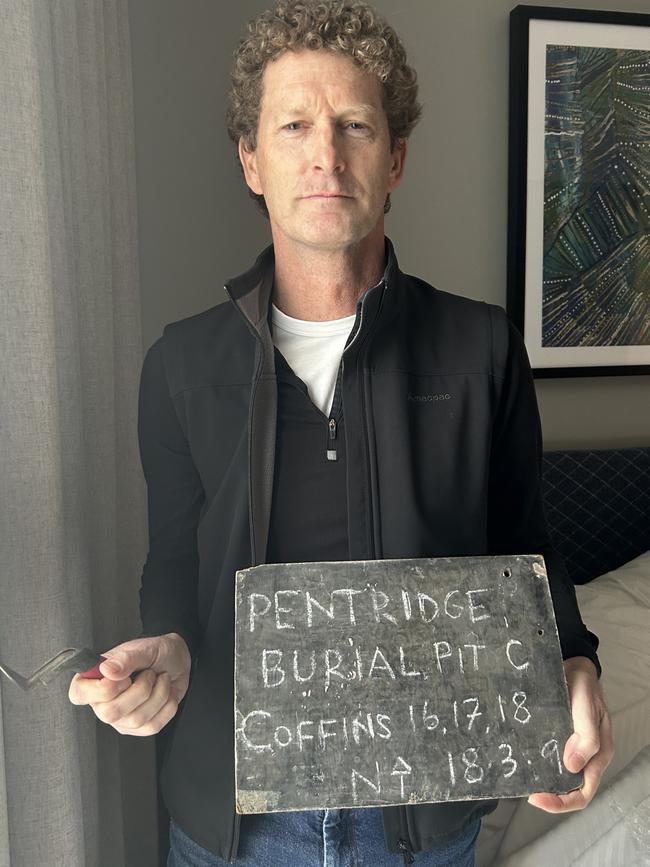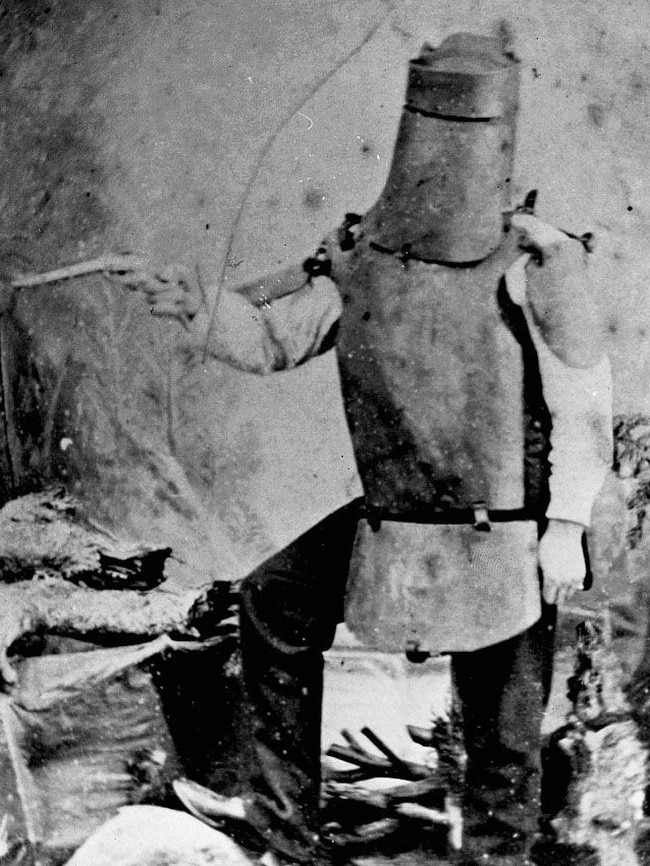Mystery of Ned Kelly’s missing skull finally revealed by Victorian archaeologist Jeremy Smith
The archaeologist who eventually found Ned Kelly’s missing remains has revealed the outlaw’s skull was never nicked at all.

The mystery of Ned Kelly’s missing skull has finally been solved.
In a twist befitting a saga that started with an exhumation and continued with a stolen skull and then a lost grave, the archaeologist who eventually found Kelly’s missing remains has revealed that the famous outlaw’s skull was never nicked at all.
“It was actually never stolen,” said Heritage Victoria senior archaeologist Jeremy Smith. “Or was missing.”
The revelation is among many in a new book, Australia’s Most Infamous Jail: Inside the walls of Pentridge Prison.
Mr Smith said new forensic testing revealed Kelly’s skull had been buried in a toolbox with the rest of his remains and not put on display at the Old Melbourne Gaol and subsequently stolen in 1978 as previously thought.
“There were parts of his skull in his burial box,” Mr Smith said.
“People still seem to think about the mystery of the missing Kelly skull, but it’s no mystery at all. We have significant parts of the Kelly skull that have been confirmed with DNA testing.”

In a remarkable story that reveals how a team of archaeologists, historians, scientists, politicians and a backhoe driver dug deep to solve the riddle of what happened to Australia’s most famous outlaw, the book details the full account of how Kelly’s remains were lost after being relocated from the Old Melbourne Gaol to Pentridge Prison in 1929 – then found in 2009 after a seven-year search.
“It really was an Indiana Jones-like project,” Mr Smith said. “Missing skulls and burial grounds, the mystery of Ned Kelly. It was one of those projects that got weirder and weirder.
“I work in a government department so I was always going to my boss with strange requests … It was amazing how it all came together.”
Thought to be buried in a marked plot at Pentridge prison, Edward E. Kelly’s remains were officially declared lost in 2002 when a team of archaeologists tried to exhume his grave.


“Edward Kelly was clearly marked on the document beneath one of the mass graves,” Smith said. “It looked as though the grave he was in included the first of the graves dug up and moved to Pentridge in 1929. But nothing was where it was supposed to be,” he said.
“The area referred to as ‘The Pentridge cemetery’ was supposed to contain the remains of all the people who were judicially executed in Pentridge, but it soon became clear that at Pentridge, X certainly didn’t mark the spot.”
In a seven-year search of the site, Mr Smith and his team located four mass graves containing the remains of 30 executed inmates – but no sign of Kelly.
“I thought it was highly likely trophy collectors had pillaged what was left of his remains in 1929,” he said.
The hunt for Kelly’s remains was reignited when a stolen skull, believed to be the outlaw’s, was returned. “Ultimately it was proved that the skull did not belong to Kelly,” Mr Smith said.

Kelly’s remains were eventually discovered in 2009 after a backhoe operator unearthed a mass grave during redevelopment of the former prison site.
“Kelly ended up being the most complete skeleton we found,” Mr Smith said. “His skeleton was 90 per cent complete.”
And in a new revelation, that box included his skull. “Those fragments have cut marks that show it was sectioned as part of an autopsy following his execution,” Mr Smith said.
“Kelly’s skull ended up in multiple parts and what was left was put in the box … He had been moved three times when we started our project, the third time being during works at Pentridge, so to find him largely intact is a minor miracle.”
Australia’s Most Infamous Jail: Inside the walls of Pentridge Prison by James Phelps will be published by HarperCollins on October 4.






To join the conversation, please log in. Don't have an account? Register
Join the conversation, you are commenting as Logout